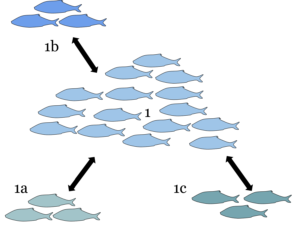The Metapopulation Concept
A metapopulation is a group of spatially separated populations of the same species that interact at varying levels. This concept, rooted in ecology and evolutionary biology, provides a framework for understanding the dynamics of species that inhabit fragmented landscapes. Each individual population, or subpopulation, within a metapopulation occupies a distinct habitat patch, which can vary in size, quality, and connectivity. Although individual subpopulations may go extinct locally due to environmental changes or demographic factors, the overall metapopulation can persist over time through migration and recolonization of vacant habitat patches.

Panmixia refers to a situation where all individuals within a population are equally likely to mate with each other, resulting in random mating. In a truly panmictic population, no barriers to gene flow exist, meaning genetic material is shared freely among all individuals. This results in homogenous allele frequencies throughout the population and no observable sub-structuring. In reality, panmixia is rarely achieved, as most natural populations experience some degree of non-random mating due to geographic barriers, behavioral differences, or social structures. However, in species that can disperse widely across continuous habitats (like certain migratory fish or birds), panmictic tendencies are more pronounced
Media Attributions
- metapopulation © Kjspencer12 is licensed under a CC BY-SA (Attribution ShareAlike) license

